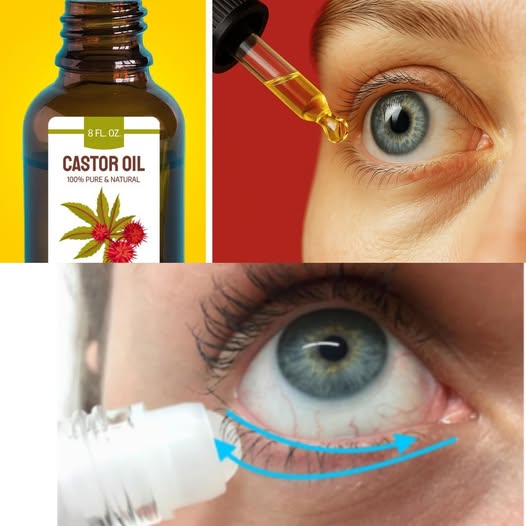Introduction: The Surprising Truth About Avocados

Avocados have become the poster child of modern healthy eating. From trendy toast toppings to creamy smoothies, these green gems are everywhere. Why not? They’re loaded with heart-healthy monounsaturated fats, nearly 20 essential vitamins and minerals, and antioxidants that promise better skin, heart health, and even weight management.
In fact, the average avocado has about 240 calories, 10 grams of fiber, and 15 grams of healthy fats—making it one of the most nutrient-dense fruits you can eat.
But here’s the shocking reality no one talks about:
Using avocados the wrong way can actually harm your health, sabotage your wellness goals, and waste your hard-earned money.
In this in-depth guide, we’ll reveal the 3 ways you might be using avocados that can backfire badly—and how to fix them. Plus, we’ll answer the most-searched questions about avocado safety, nutrition, and usage.
If you think you’re eating avocados the right way, read on. You might be making one of these surprisingly common mistakes.
The Avocado Craze: Why Everyone Loves This Superfood
Before we reveal the pitfalls, let’s establish why avocados are so beloved:
- Rich in healthy fats: 71% of the fat in avocados is monounsaturated (the same type found in olive oil).
- Nutrient-dense: Contains potassium (more than bananas!), folate, magnesium, and vitamins C, E, K, and B-6.
- Supports heart health: Research shows diets high in monounsaturated fats can lower LDL (“bad”) cholesterol while maintaining HDL (“good”) cholesterol.
- Versatile: Works in savory dishes, desserts, smoothies, and even skincare.
But here’s where the love affair can turn toxic.
3 Ways Using Avocados May Backfire on Your Health (And How to Avoid Them)
1️⃣ Overeating for “Health” – Ignoring Calories and Portion Control
Problem:
Avocados are healthy, but they’re calorie bombs. One medium avocado has roughly 240–250 calories and 22–25 grams of fat.
Many health-conscious people make the mistake of treating avocados like unlimited free food. Piling half or a whole avocado on every meal can push you into calorie surplus, sabotaging weight-loss goals.
Data Point:
A 2021 study in Nutrients journal noted that although avocado eaters have better overall diet quality, uncontrolled consumption can lead to excessive caloric intake.
Solution:
✅ Stick to recommended serving sizes (about ⅓ of a medium avocado or 50g per serving).
✅ Measure mashed avocado before adding it to toast or salads.
✅ Track it in your nutrition app if managing weight.
Emotional Hook:
Don’t let a “healthy” food quietly expand your waistline.
2️⃣ Unsafe Storage Practices – Leading to Foodborne Illness
Problem:
Avocado flesh turns brown quickly after cutting due to oxidation. To slow this, many people store leftover avocado on the counter or simply cover it lightly. Unfortunately, bacteria like Listeria or Salmonella can grow if not stored properly.
Also, the outer skin of avocados is often contaminated with pathogens from soil and handling. Slicing through unwashed skins transfers these pathogens to the edible flesh.
Shocking Statistic:
A 2018 FDA sampling found 17% of avocado skins tested positive for Listeria, and around 1% had Salmonella.
Solution:
✅ Wash the avocado skin thoroughly under running water before cutting.
✅ Store cut avocado in an airtight container in the fridge and eat within 1–2 days.
✅ Add lemon or lime juice to reduce browning and bacterial growth.
Urgency:
Protect yourself and your family. Don’t let avocado become a carrier of harmful bacteria.
3️⃣ Using Avocado Oil Without Checking Quality – Falling for Fake Products
Problem:
Avocado oil is praised for its high smoke point and healthy fats. But recent studies show a significant percentage of avocado oil on store shelves is rancid or adulterated with cheaper oils.
Case in Point:
A 2020 UC Davis study analyzed 22 avocado oil brands. Shockingly:
- 82% were either rancid or mixed with other oils (like soybean oil).
- Only 3 brands were pure, fresh, and unadulterated.
Health Risk:
Oxidized oils contain harmful compounds that promote inflammation and oxidative stress. Adulterated oils can deliver unhealthy fats you’re trying to avoid.
Solution:
✅ Choose reputable brands with lab-tested quality.
✅ Look for dark bottles to protect against light-induced oxidation.
✅ Store oil in a cool, dark place, and use within 6 months of opening.
Emotional Trigger:
Don’t pay premium prices for fake or harmful oils. Protect your health and your wallet.
FAQs: Your Biggest Questions About Avocado, Answered
❓ Is It Safe to Eat an Entire Avocado Every Day?
It depends on your calorie needs. If you’re watching your weight, you may want to limit to ⅓–½ an avocado per day. For others with higher caloric requirements, one whole avocado daily can fit fine. Balance is key.
❓ How Can You Keep Avocado from Browning?
✅ Add lemon or lime juice to cut surfaces.
✅ Store in an airtight container.
✅ Press plastic wrap directly onto the flesh to limit air contact.
✅ Refrigerate immediately after cutting.
❓ Can You Eat Brown Avocado?
Slight browning from oxidation is harmless (but not very appealing). However, mold or off smells mean it should be discarded. When in doubt, throw it out.
❓ Is Avocado Oil Better Than Olive Oil?
Both are healthy! Avocado oil has a higher smoke point (~500°F) making it great for high-heat cooking. Olive oil (especially extra virgin) has more antioxidants. Variety is best.
❓ Is the Avocado Pit Edible?
While some claim health benefits from grinding pits into smoothies, research is lacking on safety. The FDA does not recommend eating avocado pits due to potential toxins.
The Science: Why You Should Care About These Risks
Why calories matter: Even healthy fat has 9 calories per gram. It’s easy to overlook how quickly these add up.
Why storage matters: Foodborne illnesses can cause nausea, vomiting, diarrhea, or worse—especially in vulnerable populations.
Why oil quality matters: Rancid oils contain lipid peroxides that damage cells, promote inflammation, and may increase disease risk.
Bottom line: Small mistakes can undo big health benefits.
The Fix: How to Enjoy Avocados Safely and Deliciously
✅ Wash thoroughly before cutting.
✅ Practice portion control.
✅ Buy reputable avocado oil brands.
✅ Refrigerate leftovers in airtight containers.
✅ Use citrus juice to preserve color and freshness.
✅ Avoid questionable recipes (like pit powder) without scientific backing.
Why This Matters: Your Health, Your Money, Your Peace of Mind
Let’s be clear: Avocados are one of the most nutritious, delicious, and versatile foods on the planet.
But misuse can turn this superfood into a super-risk. By adopting smarter practices, you don’t just protect your waistline—you also safeguard your health and budget.
Imagine confidently adding avocado to your meals, knowing you’re getting the pure, safe, nutritious benefits you paid for. No wasted dollars. No hidden calories. No dangerous bacteria.
Conclusion: Don’t Let Avocado Mistakes Ruin Your Health Goals
Avocados deserve their reputation as a superfood—but only if you use them wisely.
Key Takeaways:
✅ Control portions to stay calorie-conscious.
✅ Store and handle safely to avoid foodborne illness.
✅ Verify avocado oil quality to avoid fake or rancid products.
By being informed, you turn avocados from a potential pitfall into a powerful ally in your healthy lifestyle.
Ready to level up your nutrition game? Start applying these simple strategies today—and share this guide with friends who love avocados as much as you do. Let’s help everyone enjoy real health benefits without the hidden risks.


